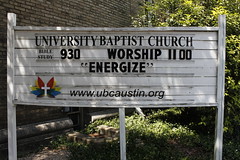Support for research data repositories
The new large scale research data is also a hallmark for pragmatic simplicity. EPrints avoid getting very explicit about subject data classification and control, taking a generic approach that can be extended.
Research data can come in two container datatypes, ‘Dataset’ and ‘Experiment’. A Dataset is a standalone, one-off collection of data. The metadata reflects the collection. The object can contains one or more documents, and must also have a read-me file attached, which is a human-oriented manifest, as, though machine-oriented complex metadata is possible, it would deter actual use.
The other datatype is Experiment. This describes a structural process that may result in many datasets. The metadata reflects process and supports the Open Provenance Model.
Where the standard metadata don’t suffice, one of the data streams belonging to the object can be an xml file. If I understood correctly, xpath expressions can then be used for querying and browsing. Effectively this unleashes the shackles of the standard metadata definitions and creates flexibility similar to Fedora. It's very similar to what we're trying to do in the FLUOR project with a SAKAI plugin that acts as a GUI for a data repository in Fedora. Combining user-friendliness with configurable, flexible metadata schemes is a tough one to pull off, I'll certainly keep an eye out on the way EPrints accomplishes this.
The Bazaar
The EPrints Bazaar is plug-in management system and/or an ‘App Store’ for EPrints, inspired by Wordpress. For an administrator it's fully GUI driven, versatile and pretty fool-proof. For developers it looks pretty easy to develop for (I had no trouble following the example with my rusty coding skills).
The primary design goal was that the repository including API must always stay up. They’re clever bastards: they based the plug-in structure on the Debian package mechanism, including the tests for dependencies and conflicts, which makes it very stable. Internally, they’ve run it for six months without a single interruption. Now that’s eating your own dog food!
 |
| Off the beaten track |
EPrints as a CRIS
The third major new functionality of 3.3 is CERIF import & export. Primarily this is meant to link eprints repositories automatically to CRIS systems, but for smaller institutions that need to comply with reports in CERIF format but don’t have a system yet, using eprints itself may suffice as pretty much all the necessary metadata is in there. The big question is whether the import/export would allow a full lossless roundtrip, as I joined this session halfway (after an enthousiastic tweet prompted me to change rooms) I might've missed that.
This sounds very appealing to me. Unfortuntaly, the situation in the Netherlands is very different, as a CRIS has been mandatory for decades for the Dutch Universities. Right now we’re in the middle of an European tender for a new, nationwide system, and the only thing I can say is that it’s not without problems. How I’d love to experiment with this instead in my institution, but alas, that won't be possible politically
The EPrints attitude
As Les Carr couldn’t make it stateside, he presented it from the UK. The way this was set up was typical for the can-do attitude of the eprints developers: Skypeing in to a laptop which was put before a mike, and whenever the next slide was needed Les would cheerily call out ‘next slide please!’, after which the stateside companion theatrically reached out for the spacebar of the other laptop, connected to the beamer. Avoid neat technology for technology’s sake and keep it simple and effective.
As Les Carr couldn’t make it stateside, he presented it from the UK. The way this was set up was typical for the can-do attitude of the eprints developers: Skypeing in to a laptop which was put before a mike, and whenever the next slide was needed Les would cheerily call out ‘next slide please!’, after which the stateside companion theatrically reached out for the spacebar of the other laptop, connected to the beamer. Avoid neat technology for technology’s sake and keep it simple and effective.



